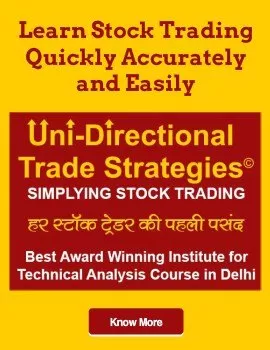Do you want to learn stock trading like professionals? Has this lockdown affected your classes? Then this is your last chance to enrol for IFMC Stock Market Course for Professionals. It is a full-term program for beginners who want to learn how to trade in the share market like a pro?
Table of Contents
ToggleWhat you’ll discover in this program?
- Complete knowledge of four market – equity, options, future, and commodity market
- Practical training on live market trading software
- Gain knowledge of technical and fundamental analysis
- Explore complex trading strategies
- Understand trading psychology
Why to attend?
- Short-term course
- Small batch
- Certification
- Interactive Q&A session
Who should attend?
It is a short-term webinar course for stock market professionals. Anyone who wants to learn how to do share trading in the Indian Stock Exchange like a pro must attend this course.
- MBA & BBA/CA/CS/CPT Students
- Anyone who wants experts in the financial market
- 10+2, BA. B.com. B.Sc. Pursuing Students
- Those who want to pursue a career in financial service
Only Limited Seats Available*
Book Your Classes: 9870510511
Batch Starting From: 15th July 2024
DETAIL CURRICULUM
Module 1: Capital Market & its Operation
- Basic knowledge of capital market (Primary Market & secondary Market)
- Major Market Participants
- Major exchanges and indices
- Legal Framework and regulations
- Trading and Trading Membership
- Clearing and Settlement Process
- Fundamental Valuation concepts Glimpse of various trading software (ODIN, NEAT, NOW)Practical training of market operations
- Practical Classes daily from 10.00am-03.30pm (live trading and methodology)
- Online Mock test (500 Question & answer test series) of NCFM Capital market module
Module 2: Derivatives Market & its Operations
- Introduction to Derivatives, Type of derivative contracts
- Understanding of future, forward, option and SWAP
- Future contracts, Mechanism & pricing of Forward contracts
- Understanding of Options and it’s (call & put)
- Trading, Clearing, and Settlement, Risk Management in Derivatives
- Regulatory Framework
- Accounting of Derivatives
- Practical Classes of 10 hours (live trading and methodology (Futures & Options)
- Online Mock test (1000 Question & answer test series) of NISM Derivative market module
Module 3: Commodity Market
- Understanding Commodity Market
- Live Trading in Commodities- MCX and NCDEX
- International commodity Vs Domestic Commodity
Module 4: Currency Market
- Currency Derivative and its History
- Forward, Future and Options of currency derivative
- Trading, clearing, settlement & Risk Management of currency futures
- Different Strategy Use for Currency Derivative Trading
- Live Trading practices (2 Hours) in currency derivative segment
- Online Mock test (800 Question & answer test series) of NISM series1
Module 5: Technical Analysis and its Application
Introduction about Technical Analysis
What is technical analysis?
The basis of technical analysis
Difference between technical vs fundamental analysis
Type of Charts
Introduction to chart
The various types of price charts
- Line chart
- Bar chart
- Candlestick chart
- Kagi chart
- Point & Figure chart
- Renko chart
- Three Line Break chart
Trend lines
- What is the purpose of drawing trend lines?
- How to plot trend lines
Candlestick study
One candlestick pattern
- Doji
- Hammer / Hanging Man
- Inverted Hammer / Shooting Star
- Spinning Top
- Marubozu
Double candlestick pattern
- Bullish /Bearish Engulf
- Bullish /Bearish Harami
- Piercing pattern /Dark cloud cover
- Tweezer Top & Bottom
Triple candlestick pattern
- Morning star /Evening star
- Three white shoulders / Three black crows
- Abandoned body (Bullish & Bearish)
- Tasuki Gap (Bullish & Bearish)
Five candlestick pattern
- Rising three methods & falling three methods
Support & Resistance
What is Support?
What is Resistance?
Change of support to resistance and vice versa
Charts patterns and their study
Four stages:
- Accumulation
- Markup
- Distribution
- Panic liquidation
Chart patterns:
- Head & Shoulder
- Inverted Head & Shoulder
- Double top/bottom
- Flag & Pennant
- Symmetrical, Ascending, Descending Triangles
- Wedge Patterns
- Rounding top/bottom
- Cup & Handle
- Rectangles Bullish / Bearish
- Triple top/bottom
Gaps & Gaps Analysis
Types of Gaps:
- Common gap
- Breakaway gap
- Runaway gap
- Exhaustion gap
- Island cluster
Oscillators & indicators
What does a technical indicator offer?
Why use indicators?
Types of indicators:
- Leading indicator
- Lagging indicator
Moving Averages
- Simple moving average
- Exponential moving average
- How to trade on moving averages?
MACD
- What is the MACD and how is it calculated?
- How to trade on MACD?
RSI
- What is momentum?
- Calculation of the RSI
- Divergence
- How to trade on RSI?
On Balance Volume
- Overview
- Calculation of On Balance Volume
- How to trade on On Balance Volume
Stochastic
- Overview
- Construction
- How to trade on stochastic
William %R
- Overview
- Signals
- How to trade on William %R
Bollinger Bands
- Few rules for beginners
- How to trade on bollinger bands
- How to use multiple indicator
Money Flow Index
- Overview
- How to trade on Money Flow Index
Trading strategy
The Dow Theory
- Background
- Principal rule of the Dow Theory
Elliot Waves Theory
- Elliot wave basics
- How to trade on Elliot waves
Fibonacci sequence
- How to trade on Fibonacci retracement
- How to trade on Fibonacci extension
Trading psychology and how to manage the risk
Module 6: Option Strategy
Introduction to Options
- Option Terminology
- Options Payoffs
- Payoff profile of buyer of asset: Long asset
- Payoff profile for seller of asset: Short asset
- Payoff profile for buyer of call options: Long call
- Payoff profile for writer (seller) of call options: Short call
- Payoff profile for buyer of put options: Long put
- Payoff profile for writer (seller) of put options: Short put
Strategies
- Long call
- Short call
- Synthetic long call
- Long put
- Short put
- Covered call
- Long combo
- Protective call
- Covered put
- Long straddle
- Short straddle
- Long strangle
- Short strangle
- Collar
- Bull call spread strategy
- Bull put spread strategy
- Bear call spread strategy
- Bear put spread strategy
- Long call butterfly
- Short call butterfly
- Long call condor
- Short call condor
Module 7: Fundamental Analysis
- Introduction of Fundamental Analysis
What is Fundamental & Technical Analysis?
Difference between technical & fundamental analysis
Features & benefits of Fundamental analysis - Top-Down Approach in Fundamental Analysis
Economic Analysis
Industry Analysis
Company analysis - Economic Analysis
GLOBAL & DOMESTIC RESEARCH (EVENTS)
- Political events (Election Results)
- Central Bank Meet (Central Bank events)
- Government Budget
- Monsoon
- OPEC Meeting
- War or Terrorist Attack
OTHER EVENTS
- Rating agencies
- India VIX
- Scandal
- Insider Activity
- Country Debt
CURRENCY ANALYSIS
CORRELATION OF EVENTS
ECONOMIC DATA ANALYSIS
- Inventory
- Retail Sales
- Consumer Confidence
- CPI – Consumer Price Index
- PPI – Producer Price Index
- Core Durable Goods Order
- New Homes Sales
- Building Permits
- ADP Non-Farm employment
- Non-Farm Employment
- Unemployment Claims
- PMI
- Industrial Production
- GDP Gross Domestic Production
- Trade Balance
- Crude Oil Inventory
- Industry Analysis
SECTOR ANALYSIS (SECTOR SELECTION)
- Oil & Gas Sector
- Aviation Sector
- Paint Sector
- T. Sector
- Metal Sector
- Pharma & FMCG Sector
- Jems &Jewelry Sector
- Banking Sector
- Automobile Sector
- Real Estate Sector
- Cement Sector
- Telecom Sector
- Power Sector
- Script Selection
Share or Commodity Selection
- Company Analysis (Valuation)
- Cash Flow
- EPS
- P/E
- Book Value
- Price to Book Value
- EBITDA
- Profit Ratios
- Dividend
- Market Cap
- DEBT
- Management
- Promoters Holding
- Volume
- Open Interest
- Beta
- Moving Average
More detail about Stock Market Course for Professionals.





















